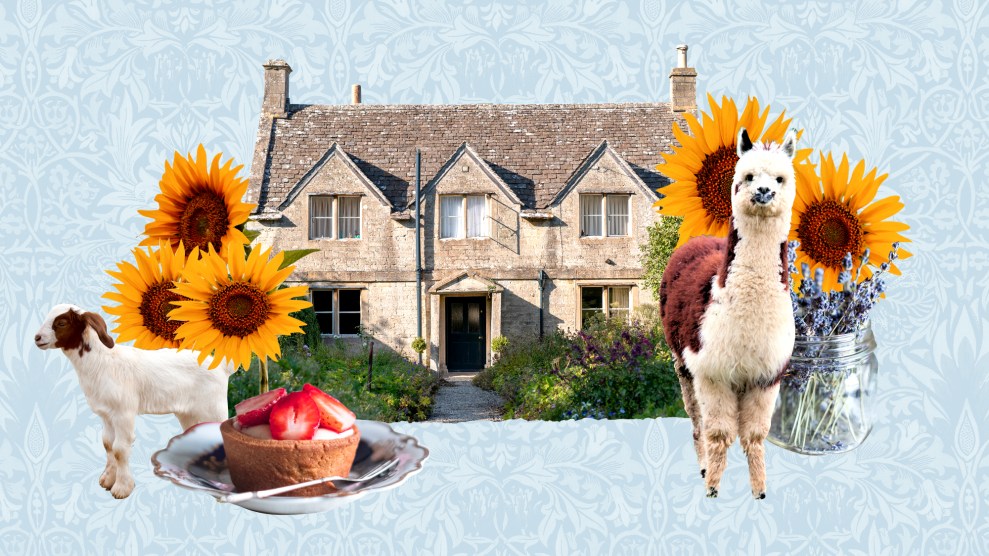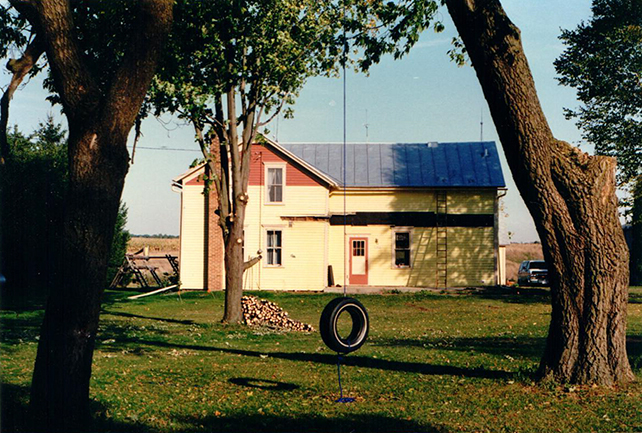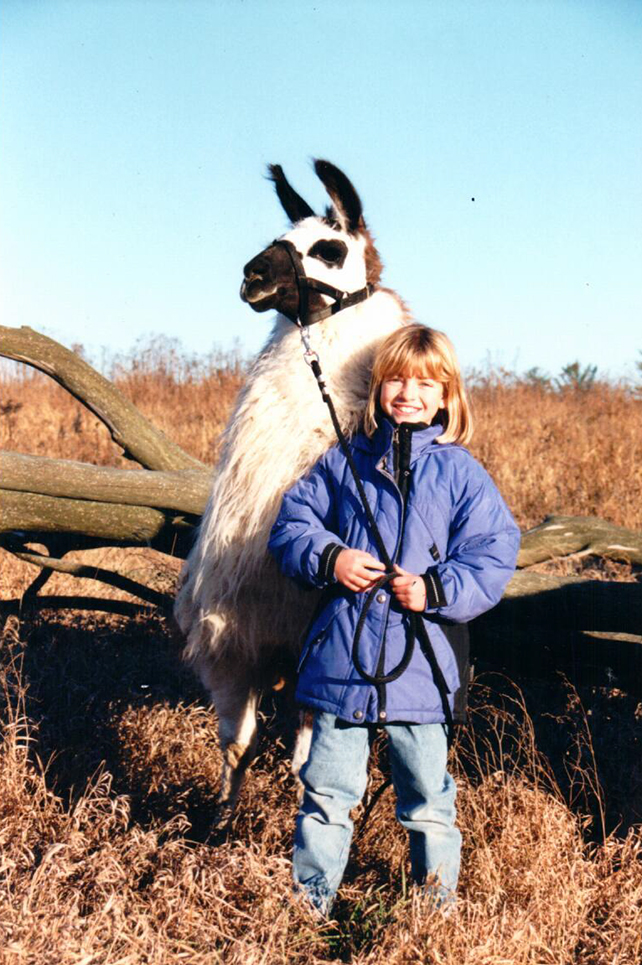
Mother Jones illustration; Unsplash
An occasional series about stuff that’s getting us through a pandemic. More here.
I have a theory that all female group chats end up in the same conversation: planning a commune.
I’ve seen it start a number of ways. A photo of the extravagant meal one of us cooked leads to a spoken desire to host a dinner party with everyone. On a Zoom hangout, someone expresses a wish to do an activity (tie-dyeing, for example) as a group. The need to share frustration—after putting up a heavy shelf or unpacking from a move, or getting comfortable riding a bike in a city again—becomes a call for help, and one of us wonders if we can just go through it all together.
From there it morphs into plans for vacation, and someone searches for a house to rent. Then we wonder how long we can take off from work (from our partners, our pets). We wonder if we can extend our time together by working remotely. It devolves into a realization: We can just bring our entire lives.
By the time you’re on the Instagram account Cheap Old Houses—and telling everyone that buying a place in Dixfield, Maine, and jointly living there for 10 years would probably be the most logical way to handle taking off work—you know you’re in full-blown commune planning.
This group-living idea occurred to me before the pandemic, but as I’ve talked to far-flung friends in recent months, it’s become an obsession. It’s rare for our group to go more than a few days without poring over another abandoned beauty, another commune contender. We swoon over the Tudors, the midcenturies, the Victorians, commenting on which have south-facing windows or “good bones.” (We recently expanded to the Nordic version of Cheap Old Houses, and our dreams have gone abroad.)
We scheme in earnest. We discuss who gets which room, where to put the library, how to assign cooking responsibilities, what we’d name the chickens, whether to have goats or llamas (or both!). We workshop the best use for the property. A bed and breakfast? Animal sanctuary? Organic farm? Goat yoga and writer’s retreat?! We’ve even named the future utopia: “the cry-mmune.”
For the seven of us—millennials who graduated into a housing crisis, recession, and devastating job market—these ramshackle gems often feel like the only homeownership within our reach. If it’s all impossible, why fantasize about a garden in the nation’s most expensive cities (where we live) when you can imagine a whole botanical estate somewhere else?
And yet I can’t help but laugh that this deep desire as an adult echoes a life I have, in many ways, already lived. It’s an appeal to my childhood.

In his late 30s my father wanted a more pastoral life for us. My parents traded in our stylish suburban home for a 150-year-old farm and moved my siblings, on Christmas Eve, to 10 acres in the middle of nowhere Wisconsin. We spent countless hours and trips to Menards over the next few years fixing up the property. The list of projects seemed endless. The setbacks—a crumbling foundation, a basement teeming with water damage, the occasional bat that escaped the attic—were daunting. But when everything was said and done, we had a home. There was a plentiful summer garden, a small apple orchard, and over a dozen llamas. We were #cottagecore before hashtags were a thing.
When I reached my teens, I wanted nothing more than to escape that life. The idea of moving to a big city is what sustained me through the hard high school years. It took me a long time to realize that my motivation was to exit not the lifestyle, but the loneliness. There wasn’t much for community nearby, and our closest neighbors lived more than a mile away. We had a home, sure, but no one else to share it with.

When a Reddit post made its way around the Twittersphere recently—wherein a single woman in her 40s had bought a home next to her two best single friends—I saw kinship and a new kind of future. The group knocked down the fences between their homes and turned it into a shared courtyard with a communal garden. Her married friends chastised her for putting those friendships above others; the author explained she considered those single friends her family, her life partners. As a single 30-something with no end in sight, nothing in the past few months of lockdown has felt more relatable.
It’s never been more apparent that the people I care most about are the ones I live furthest from. Pandemics have a way of exposing the need for precisely what we’re missing: competent leadership, reliable health care, job security, and justice—but also community. What I wouldn’t give for a chance to be neighbors, to be in quarantine pods, to be building a community, with my best friends right now; to knock down the fences between our restored cottages and share a meal in our joint garden. My lack of home-repair knowledge, let alone access to power tools, does nothing to dissuade the ever-present yearning to spend my days steaming off tacky wallpaper or ripping up shag carpet to reveal the hardwood underneath. If we ever bought a house for such a project, I know that making it a home wouldn’t stop when the restoration was over.
Until then, I’ll make do with imagining our #cottagecore life in every decaying, distant home the algorithms continue to feed me.
Images from left: Birmingham Museums Trust/Unsplash, Leslie Cross/Unsplash, Marina Reich/Unsplash, Dilyar, Garifullina/Unsplash, Rumman Amin/Unsplash, Heather Ford/Unsplash, Dusan Smetana/Unsplash



















